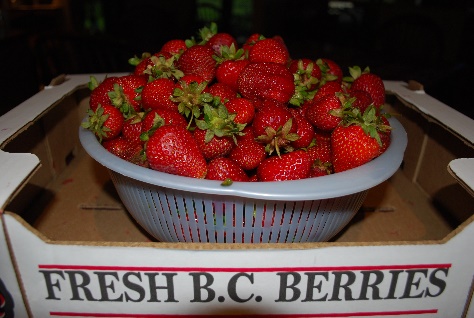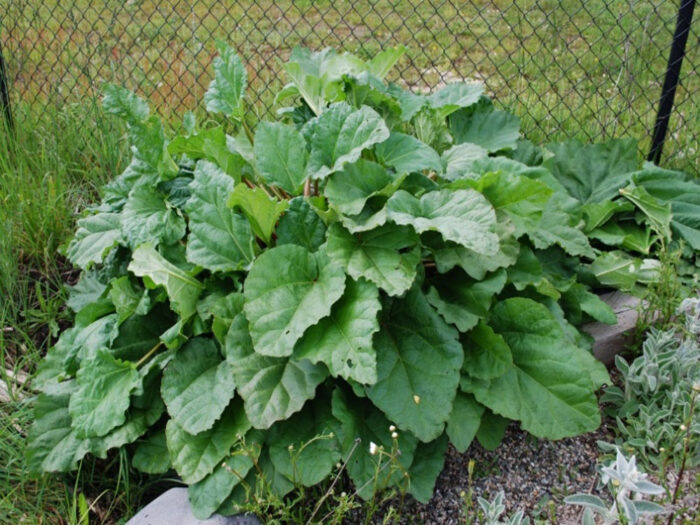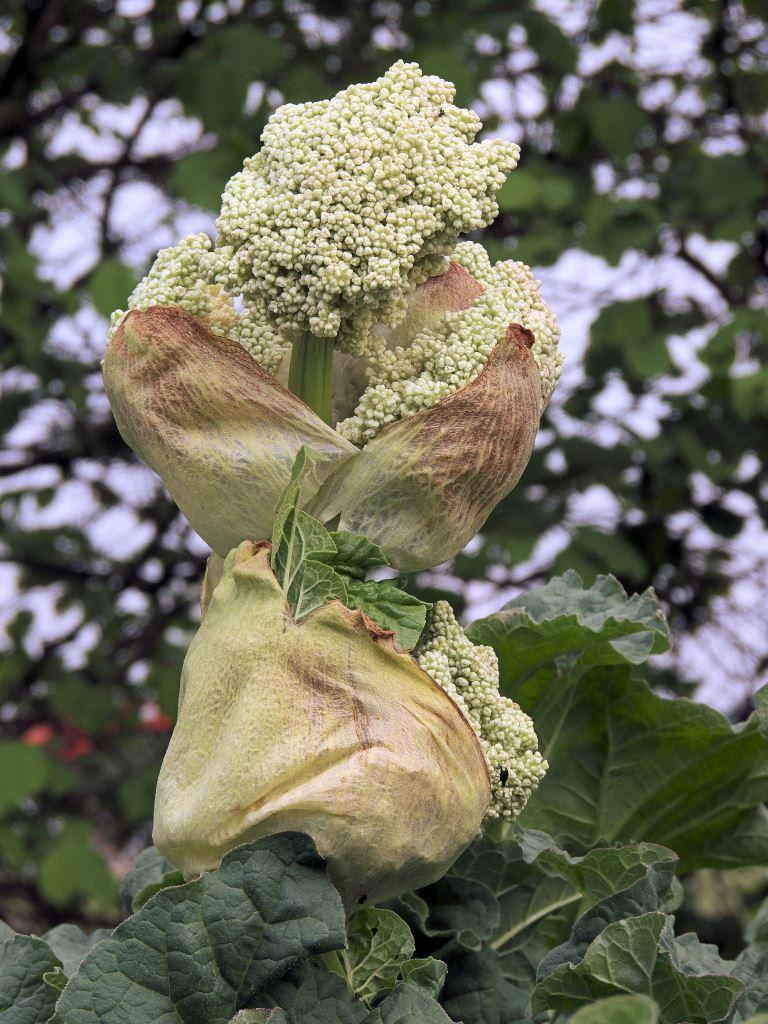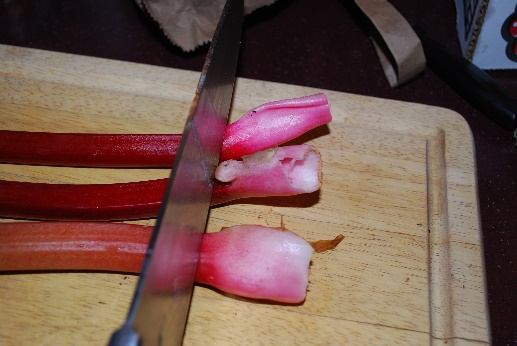By Vanda – the cheap and lazy gardener
Rhubarb is a hardy perennial which never gets watered at our house. It is early to mature so gets all the moisture it needs from snowmelt and spring rains. My rhubarb thrives in the rocky clay soil of Joe Rich and is my first perennial crop of the year. Although culinary-wise it is thought of as a fruit, it is actually a vegetable.The leaves and flowers are poisonous because they contain high levels of oxalic acid, however they have their uses. They can be used as moulds for creating concrete birdbaths and steppingstones. If you’re interested, instructions can be found on the WWW. Tip: The underside of the leaf makes a bolder imprint.
Rhubarb flower, Rasbak – Wikimedia
Cutting the pulled end.
The stalk is the edible part and, although tart in raw form, it has many uses in the kitchen: chutney, compote, crumble, pies, and drinks. Rhubarb stalks are a rich source of dietary fibers, vitamin K and C and minerals such as calcium, manganese and potassium. It can be frozen to last all year. I cut the stalks into 1-2 cm lengths and freeze in a single layer on a baking sheet then pack into a freezer bag. I harvest the stalks by pulling rather than cutting them. Either method is fine, but I’ve read that the plant will recover more quickly when stalks are pulled. I hate waste so pulling ensures I get the maximum length of stalk! I usually remove the leaves at the plant and use them as a mulch around the plant to help smother out some of the weeds. Before use, I cut off the ground end of the stalk and discard it in the compost.
I have heard that the leaves contain substances that repel insects so by boiling the leaves in water, people can produce homemade insecticide that can eliminate pests from the garden. I have not tried this as I tend to be tolerant of the insects that I have in my garden, never being sure that they are not beneficial in some way.
Once the season is over, I add some manure/compost around the plants and that is it until next spring and the new crop.
If you know someone who has a rhubarb plant, they may be willing to let you have a piece. Plant it where it has sunshine and plenty of room to spread. It doesn’t take long to become established and once it exceeds your needs you will be able to share it with someone else. The roots go deep so taking a division will take some effort. Rhubarb can be propagated by seed but requires more attention and patience.
Interesting historical fact: Due to the beneficial properties of this plant in Chinese medicine and the cost of transport from Asia to Europe, rhubarb was more valuable than cinnamon, opium and saffron in Europe in Medieval times.
Now that’s what I call a cash crop!

Rhubarb’s best friend.



